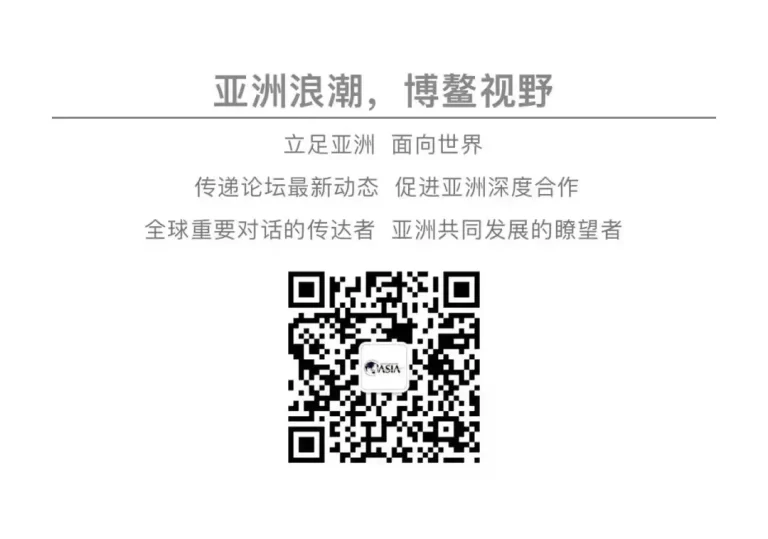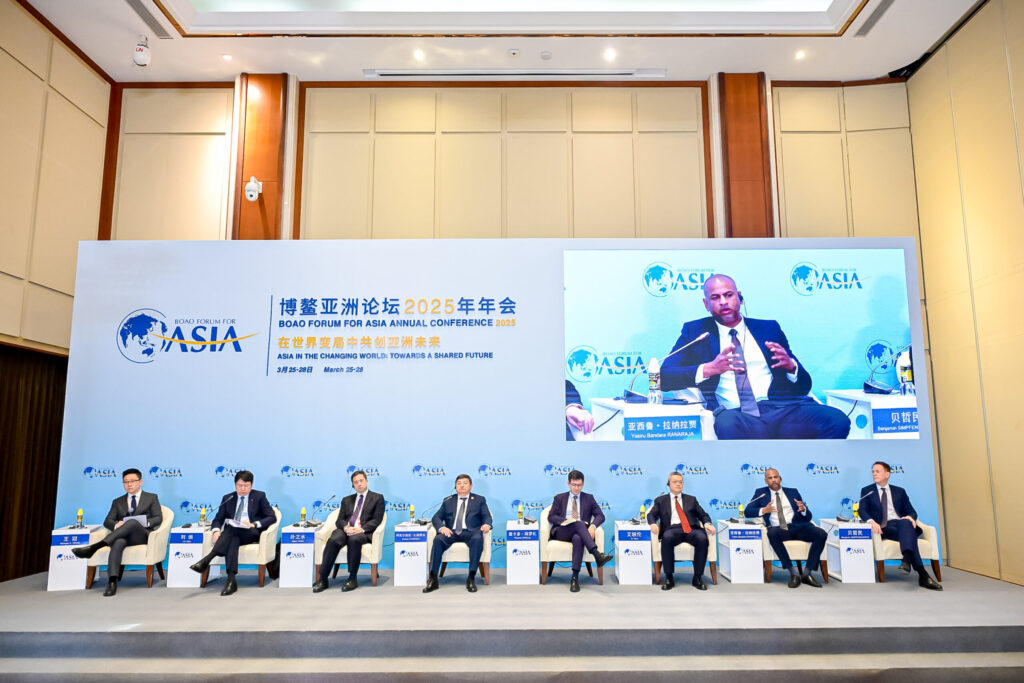BRISL at the 2025 Bo’ao Forum Annual Conference Maintaining Global Supply Chain Stability the Role of Connectivity.

On March 26 (local time), U.S. President Donald Trump signed an executive order at the White House, announcing a 25% tariff on imported cars starting April 2. He also stated the tariffs would be permanent. The U.S.’s frequent use of tariff measures has undoubtedly heightened global trade tensions, making it significantly more difficult to maintain the stability of global supply chains and sharply increasing uncertainty.
As Asia’s most influential high-end dialogue platform, the Boao Forum for Asia Annual Conference 2025 closely followed the theme “Maintaining Global Supply Chain Stability: The Role of Connectivity.” On March 27, a sub-forum was held to gather collective wisdom and explore practical and feasible solutions to stabilize global supply chains.
当地时间3月26日,美国总统特朗普在白宫签署行政令,宣布将于4月2日对美国进口汽车开征25%关税,并称汽车关税将会是永久的。美国频繁挥舞的关税大棒,无疑加剧了全球贸易的紧张局势,也使得维护全球供应链稳定难度陡然上升,不确定性显著增加。
作为亚洲最具影响力的高端对话平台,博鳌亚洲论坛2025年年会紧扣“维护全球供应链稳定:互联互通的作用”,于3月27日举行分论坛,汇聚各方智慧,旨在为稳定全球供应链探寻切实可行的方案。
Staying Open and Cooperative: Prioritize Economic Goals
Roman Sklyar, First Deputy Prime Minister of Kazakhstan, and a proactive participant in the Boao Forum, emphasized that action is essential to maintain global supply chain stability and support Asia’s sustainable development.
保持开放与合作,把经济目标放在首位
作为博鳌亚洲论坛的积极参与者,哈萨克斯坦第一副总理罗曼·斯克利亚尔表示,采取行动维护全球供应链稳定、支持亚洲的可持续发展至关重要。
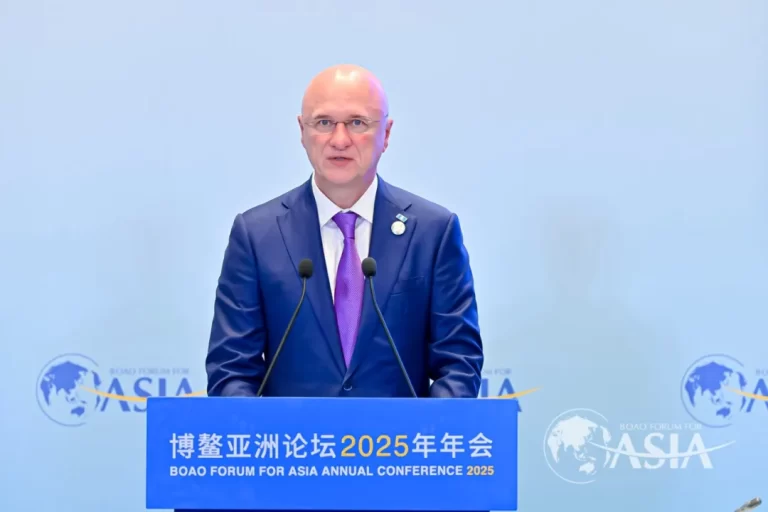
He proposed:
- Deepen trade and economic cooperation — there’s still great potential for growth.
- Expand inter-Asian transportation cooperation — to open new routes and increase transit volumes. He mentioned accelerating the development of the Trans-Caspian International Transport Route, unlocking its potential, and resolving existing bottlenecks to ensure sustainable freight transport.
- Establish a unified digital logistics platform — to ensure transparent and efficient full-process operations, including transit, tax payments, and certifications.
他提出,首先必须深化经贸领域合作,未来的潜力依然巨大。其次,必须扩大亚洲区域间的交通合作,以开辟新路线并增加过境运输数量。接下来将加快发展跨里海国际运输线路,充分挖掘该线路的潜力并协同解决现存瓶颈问题,保证货运的可持续性。第三,必须建立统一的数字物流平台,以确保包括过境运输、税费缴纳和认证等全流程透明高效。

Aqilbek Japarov, former Prime Minister of Kyrgyzstan, also strongly agreed that maintaining supply chain stability is crucial for sustainable economic development. He believes the key lies in open cooperation, logistics digitization, and infrastructure development. Kyrgyzstan is actively participating in transport infrastructure projects, upgrading trade corridors, and deepening integration with international partners and regional initiatives.
He added that the Central Asia transportation corridor not only connects the five Central Asian countries but also links the region to the trans-European transport network, offering immense strategic potential. With 80% of transit traffic between China and Europe passing through Central Asia, this connectivity brings significant development opportunities. Kyrgyzstan will also actively develop the southern Trans-Caspian Corridor, transporting goods from China and Kyrgyzstan to Europe via road and rail.
吉尔吉斯斯坦前总理阿克尔别克·扎帕罗夫也高度认同维护供应链稳定对于经济可持续发展的关键意义,并深信推动开放合作、发展物流数字化和交通基础设施是维护全球供应链稳定的关键所在。为此,吉尔吉斯斯坦积极参与各项交通基础设施建设,推动贸易走廊升级改造,深化同国际伙伴和地区的一体化合作。
阿克尔别克·扎帕罗夫认为,中亚交通走廊不仅仅可以将中亚五国联结在一起,还将中亚接入了跨欧洲大陆的运输网络,具有极大的战略潜力。当前,中国和欧洲之间80%的过境运输经过中亚,这样的互联互通无疑对中亚各国及中国都意味着巨大的发展机遇。因此,中亚各国应当乐观地看待自身所具有的地理优势,同时要充分利用优势。接下来,吉尔吉斯斯坦也将积极建设南部跨里海走廊,将吉尔吉斯斯坦和中国的货物通过公路和铁路运输到欧洲国家。

Liu Qiao, Dean of Guanghua School of Management at Peking University, noted that in a global economic downturn, every country must enhance productivity through technological innovation and systemic reform. Maintaining supply chain stability is vital in this context. He emphasized that Asia’s share of global intermediate goods trade is growing, highlighting the global importance of Asian supply chains. To address productivity and development issues, countries must abandon the “small yard, high wall” mentality, focus on economic goals, and work together.
北京大学光华管理学院院长、金融学系教授刘俏提出,面对全球经济下行的压力,每个国家都应该通过技术创新和机制性改革来提升自身的生产力。在这种背景下,维持供应链的稳定至关重要。与此同时,亚洲区域中间品在全球进出口的比重不断上升,由此可见亚洲供应链在全球的重要性。因此,要想解决生产力不足等问题,各地必须摒弃“小院高墙”的心态,把经济目标放在第一位,齐心协力、共同合作。
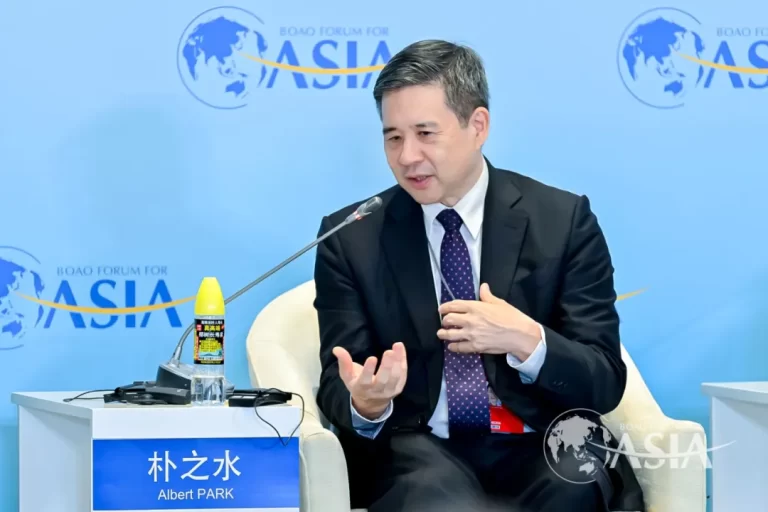
Albert Park, Chief Economist at the Asian Development Bank (ADB), stressed the need to remain open and invest multilaterally. Historically, such strategies have been highly successful. While de-globalization is on the rise globally, Asia shows a trend of deepening economic integration, with China enhancing ties across the region, boosting resilience, and softening internal shocks. With trade agreements continuing to be signed and upgraded, integration among Asian economies is set to deepen further.
亚洲开发银行首席经济学家朴之水也表示,务必要保持开放和多边投资,这样的方式在历史上是极为成功的。尽管当前去全球化的声音强烈,但在亚洲内部却呈现出经济融合加深的趋势,中国作为亚洲中心不断向周边地区增强经济联系,也进一步增强了亚洲区域的韧性,减缓了内部震荡。随着贸易协定的不断签署、落地和提升,亚洲经济体的融合还将进一步深化。
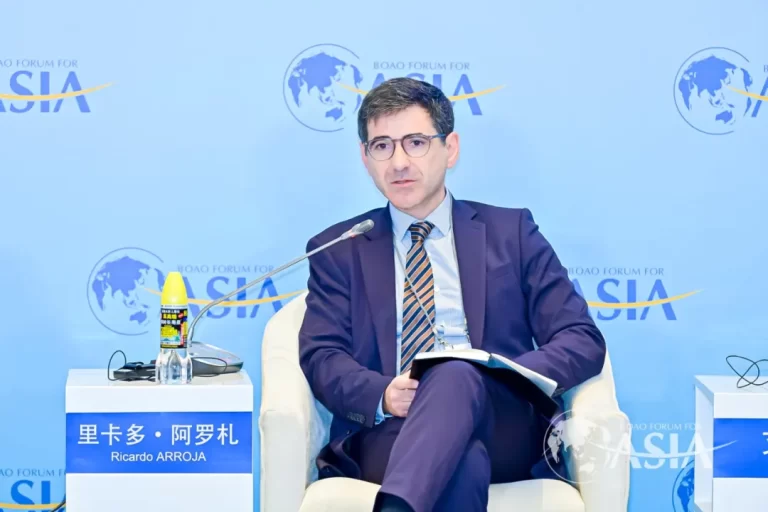
Ricardo Arroja, Chairman of Portugal Trade and Investment Agency, urged a positive outlook on current challenges. Asia’s economic and trade development continues to globalize. Many countries now prioritize investments in transportation, digital, and energy infrastructure. Portugal supports and believes in this development direction.
葡萄牙经贸投资促进局主席里卡多·阿罗札认为,必须用积极的眼光看待当前面临的困难。亚洲的经贸发展其实还在继续变得越来越全球化,全球大量国家也将交通、数字和能源基建的连通投资视为优先项。葡萄牙支持这样的做法,也相信这是未来正确的前进方向。

Yasiru Ranaraja, founding director of the BRISL and an international affairs expert, remarked that every country has its “golden era.” For China and Asia, this began with the first Belt and Road Forum for International Cooperation in 2017, when dozens of world leaders gathered in Beijing to discuss regional connectivity. Since then, Sri Lanka has established various trade hubs with different parts of Asia. This decentralized trade model has created more resilient trade systems. The challenge Asia faces is how to develop a consensus around regional trade as a whole trust remains to be strengthened
在斯里兰卡“一带一路”组织创始董事、国际问题专家亚西鲁·拉纳拉贾看来,每个国家都有自己的黄金时代,对中国乃至亚洲而言,黄金时代就从2017年首届“一带一路”国际合作高峰论坛开始,当时数十名国家领导人齐聚北京商议区域间的互联互通。多年过去,斯里兰卡已经与亚洲不同地区建立了各种各样的贸易枢纽,这种去中心化的贸易模式为当地带来了更具韧性的贸易系统。亚洲所面临的挑战是,各国之间如何形成以区域贸易作为整体的共识,信任度仍待加强。
Identify Strengths and Weaknesses: Enhancing Asian Supply Chains Through Complementarity
As the global supply chain landscape is reshaped, strengthening Asia’s supply chain requires targeted measures that leverage strengths and address weaknesses. The first step is recognizing these strengths and weaknesses clearly.
Albert Park identified leadership as Asia’s supply chain advantage. Strong leadership has kept intra-Asian trade and economic relations open. Another strength is deep regional integration — trade and investment cooperation among Asian countries is extremely close, standing out globally.
On the challenges side, he noted that while free trade agreements (FTAs) help stabilize supply chains, there remain mismatches in supply chain development and investment environments across Asia. This hampers practical cooperation. Addressing these gaps requires redefining supply chains and setting new regional development strategies.
China, traditionally a leader in Asian supply chains, plays a key role. Liu Qiao stated that for globalization to move forward, countries must ensure economic growth. If China maintains around 5% annual growth, it will continue to positively drive growth in Asia and globally. China is also restructuring to balance trade, expanding domestic demand, increasing imports, and enhancing global trade openness.
Benjamin Simpfendorfer, Partner at Oliver Wyman and Chair of the Oliver Wyman Forum Asia, noted that Asia has long been a global manufacturing hub, and recently its supply chain clustering has accelerated dramatically, showing many positive trends. For example, China’s manufacturing sector is becoming more efficient and sustainable thanks to the integration of AI technologies.
Yasiru Ranaraja reiterated that Belt and Road countries should harness their respective strengths, recognize development trends, and implement strategic plans to truly benefit from the BRI. Every company should understand the BRI deeply, focus on its own advantages, and promote international cooperation based on regional insights and long-term vision.
Representing businesses, Ai Yilun, General Manager of Hainan State Farms Investment Holding Group, shared his experience as a witness and participant in the BRI. Currently, 85% of China’s natural rubber still depends on imports. Hainan State Farms proactively established industrial footprints in BRI countries and major rubber-producing countries in Africa, as well as North America and Europe, the major consumption markets.
Today, the company’s annual processing accounts for 10% of global natural rubber, and it handles over 25% of the world’s annual natural rubber consumption. As 2025 marks the customs closure and full operation of Hainan Free Trade Port, the company aims to become a hub for China’s agricultural and technological cooperation, optimizing its layout through connectivity and achieving win-win cooperation through natural rubber trade.
认清强项与弱点,亚洲供应链扬长补短
在全球供应链格局重塑的当下,要想推动亚洲供应链稳健前行,需要有针对性地扬长补短。其前提是更清楚地认识自身的优劣以及所面临的挑战。
朴之水认为,亚洲供应链的强项是领导力。正是强有力的领导才让亚洲区域间的经贸关系长期保持开放。另一个强项则是区域内部的融合程度持续加强,不管是贸易还是投资,亚洲各国间的合作都极为密切,也在全球范围内凸显出优势。
就挑战而言,朴之水提出,自贸协定的实施可以让亚洲区域的供应链更加稳定,然而,当前亚洲各国的供应链发展程度和投资环境等诸多方面仍然存在不匹配或不太一致的情况,一定程度上也影响了现实合作。要想弥补短板,需要重新定位供应链,并制定新的区域发展战略。
在亚洲的供应链中,中国长期扮演引领者的角色。刘俏认为,在推进全球化的过程中,各国首先要努力确保自身经济的增长,如果中国经济可以维持5%左右的增长率,那么在未来很多年中都将继续正向驱动亚洲乃至全球经济的增长。与此同时,中国也在努力通过分工调整来寻求贸易平衡,同时扩大内需、加强进口,进而带动全球贸易网络的开放与升级。
奥纬咨询董事合伙人、奥纬论坛亚太区主席贝哲民表示,亚洲一直是全球制造业中心,近年来在供应链上的聚合度也在加强,比以往都要迅猛,并显现出诸多积极趋势。其中,中国制造业就在人工智能的赋能下变得更加高效和可持续。
亚西鲁·拉纳拉贾提出,“一带一路”国家应当充分发掘各自优势,把握发展趋势,并建立相应的战略举措,从而真正受益于“一带一路”倡议。每一个企业也都应深入了解“一带一路”,在开放合作的共识中立足于自身的优势,基于对区域的判断及战略远见推动国际合作。
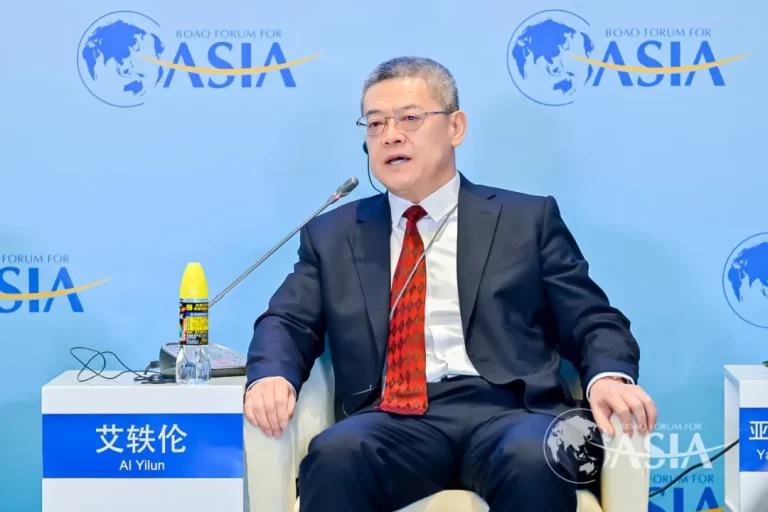
作为企业代表,海南省农垦投资控股集团有限公司总经理艾轶伦是“一带一路”的见证者和参与者。当前,中国天然橡胶85%左右仍然依赖进口。为此,海南农垦较早在“一带一路”沿线国家和非洲地区的橡胶主产国,以及天然橡胶消费区北美、欧洲进行产业布局。目前,公司年加工产量已占全球天然橡胶加工产量的10%,公司每年天然橡胶贸易量占全球年消费量的25%以上。今年是海南自贸港封关运作之年,公司致力于打造中国农业对外合作和科技合作的高地,同时伴随互联互通的进程,以天然橡胶为媒介不断优化产业布局,在包容开放中实现合作共赢。
